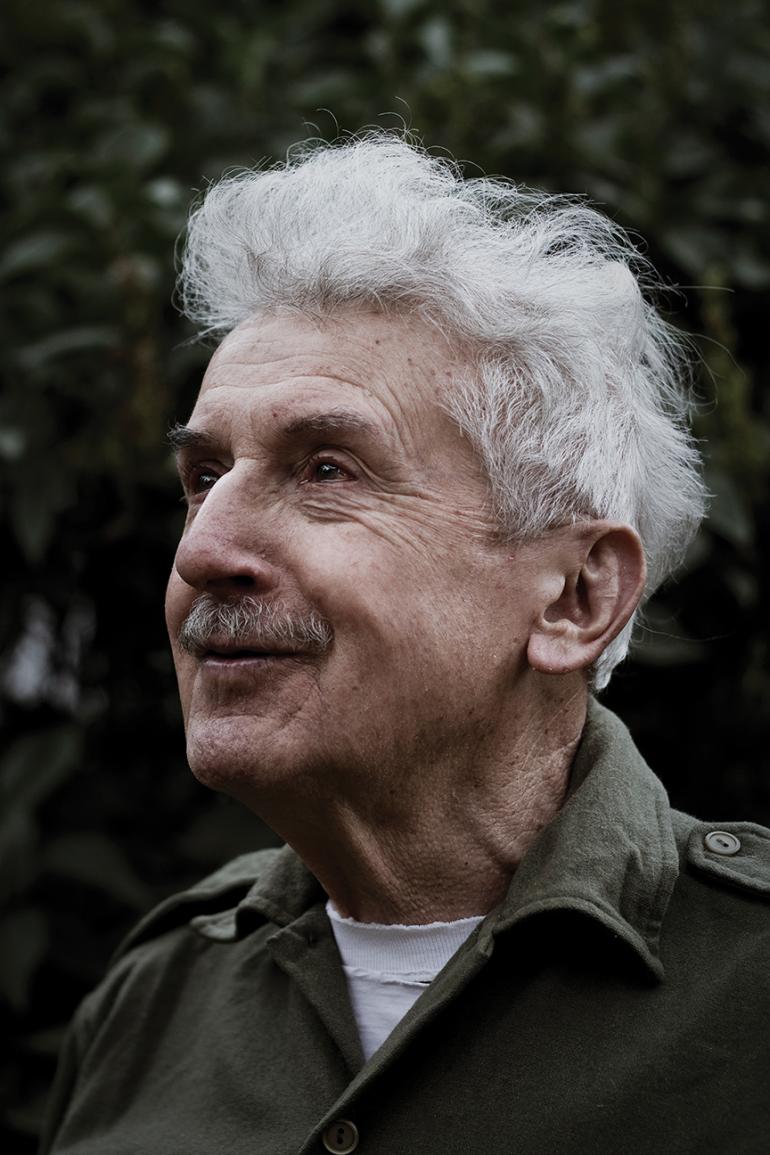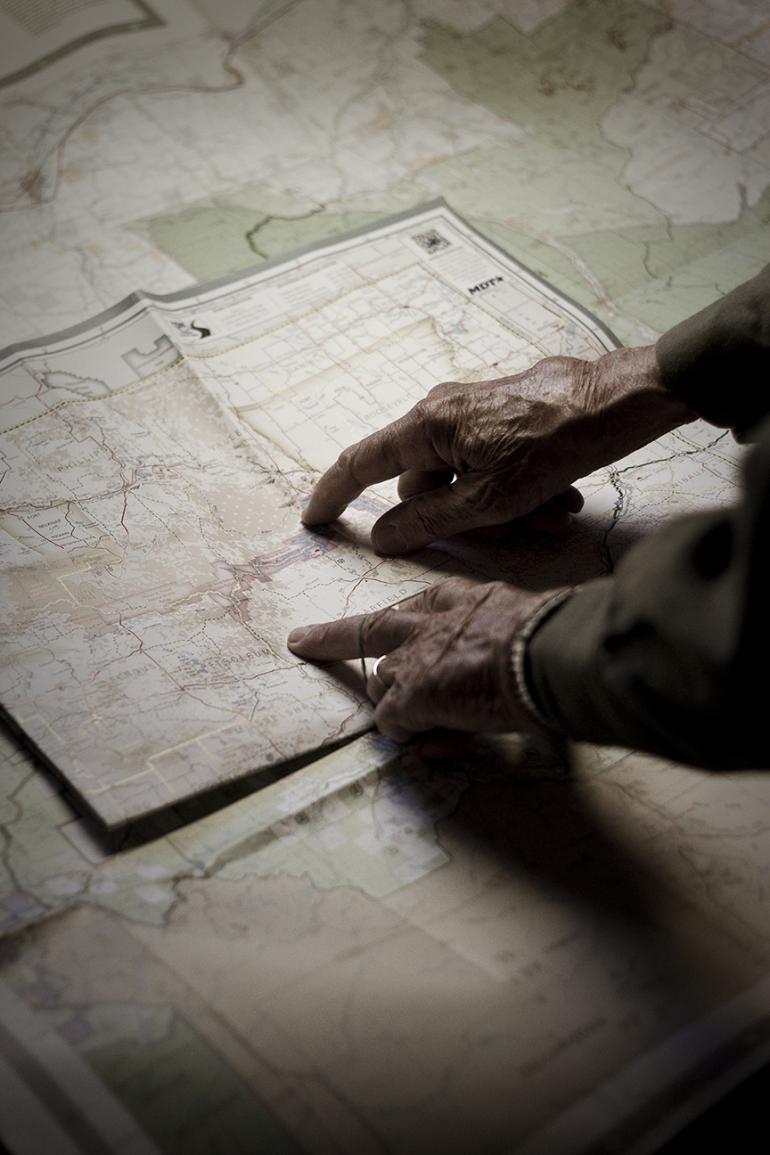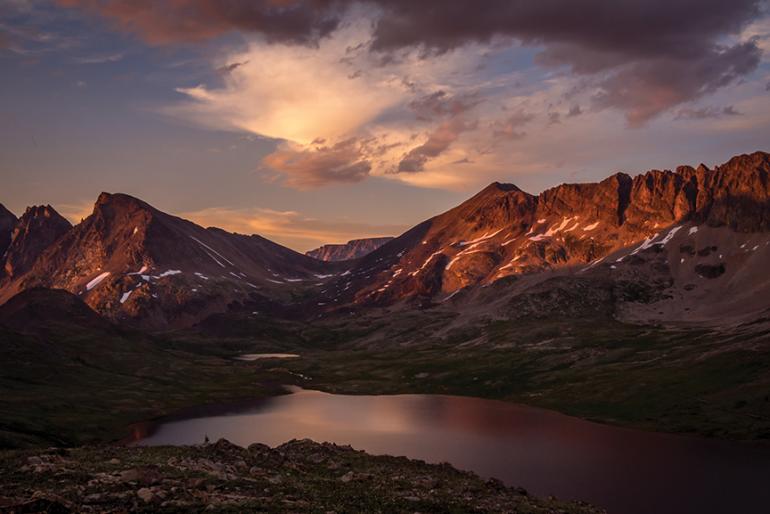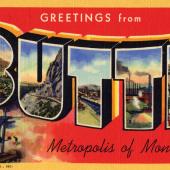Wilderness Man
The story of Joe Gutkoski.
Joe Gutkoski is a wilderness man. He spent his childhood summers in Pennsylvania trout fishing, and his autumns hunting whitetails in the foothills of the Appalachian Mountains. In 1949, Joe ranged west to Montana. To him, no other state better exemplifies wilderness than Big Sky Country—a place he’s called home for more than 60 years. Maybe it was the fresh mountain air or countless long walks in the woods, but at 88, Joe still boasts a full head of snowy white hair and a mischievous sparkle in his eye.
“The love and value of public land has always been very strong in me,” says Joe as he invites me to sit down in his home office just north of Main St. in Bozeman. Stacks of Nature, National Geographic, and Montana Outdoors take the space a chair might have occupied if Joe cared about those things; faded photos of mountain peaks he once climbed hang on wood-paneled walls; a woodstove sits in one corner ready to stave off the coming chill of autumn.
I tell Joe I’m a biologist working in Yellowstone and he immediately starts talking about bison. He reaches for a vintage BLM map of Montana and spreads it out on the floor in front of me. Pointing to the northern boundary of the Park, Joe tells me about the year he became hooked on what has become one of the most controversial wildlife issues in the state.
“It was the winter of 1988-89 and it was a tough one,” says Joe. “More than 500 bison were slaughtered near Gardiner as they migrated out of the Park to escape the deep snow.”
Just a few years later Joe founded the Yellowstone Buffalo Foundation, a nonprofit group for which he currently serves as president. The Yellowstone Buffalo Foundation is committed to restoring wild bison to Montana’s public lands—a goal that has proven elusive at best.
“There are good alternatives to hazing those poor animals back into the snows of the Park,” says Joe as he leans over the map. Joe points to a large area in northeastern Montana where Yellowstone’s surplus bison could be safely and humanely released. “Another bright prospect for bison is in the Gallatin Range,” he says as his finger trails down the creased map to the Taylor Fork drainage northwest of Yellowstone. “I want to have it designated as Wilderness, but I’m getting push-back from the mountain bikers.”
He gives me a quick glance from under thick raised eyebrows, worried he’d offended me. He hastily adds, “I’m one of them. I’m sure you are too. Superb athletes.” I smile envisioning this small, white-haired man barreling down the Emerald Lake trail in Hyalite Canyon.
It’s not hard to envision when he starts telling me about his adventures: backcountry ski trips into the 10,000-foot Spanish Peaks, boating on Yellowstone Lake in a handmade canoe, and a probable first ascent on the Black Spire of 11,212-foot Mount Cowan in the Absarokas. Yeah, Joe is a wilderness man.
Along with his adventures, Joe enjoys a lazy afternoon trout fishing, and I ask him about his involvement with Montana River Action (MRA), another nonprofit he helped start in the early 1990s.
“I’m the president of that one too,” Joe tells me as he hands over a letter describing a bill MRA plans to submit to the 2015 Montana Legislature. “Over 4,700 miles of important fisheries are dewatered by irrigators in Montana,” he explains. “MRA is asking for a law that would limit dewatering to protect those important fisheries. I shouldn’t admit this, but this will be the sixth legislature we’ve had it in. It’s been killed every time.” Regardless, Joe remains stubbornly optimistic about the bill’s chances next year.
Joe has lived in Bozeman for 50 years, fighting for bison, water rights, and wilderness. He says Bozeman has changed a lot over the years. “Back then you could make all kinds of mistakes driving the roads and not get into an accident, but now you have to be on your toes,” he laughs. More seriously, Joe adds that people started looking toward Montana for security—moving out of busy cities in search of safer communities and for more of a connection to the outdoors.
Long before Joe came to Bozeman with his wife Milly and their three children, he served two years in the Navy at the tail end of WWII. “When I joined I was just a little shrimp and they never would have taken me, but by the time I signed up, all the good men were either dead or disabled so they were scraping the bottom of the barrel.”
After the war he studied landscape architecture at Pennsylvania State University, but it would be 13 years before he pursued a career in that field. In the meantime he filled his summers smoke jumping for the Forest Service out of Missoula, eventually becoming a full-time foreman. “I knew they’d never put me as a commander,” says Joe, “because you gotta be tall and handsome and they didn’t want a scrubby little guy like me.”
Back then, the Forest Service had an age limit on smoke jumping, and you got the boot once you hit 40. Although he had a few years to spare, he decided it was time to put his degree to work becoming the first landscape architect in the region, and a thorn in the side of his supervisors for the next 20 years.
“I’m most proud of the things I busted like mining, clear-cutting, and road-building,” says Joe. He recalls a particular instance when he found out about a mining encampment on Big Timber Creek in the Crazy Mountains. Joe was blown away by what he saw—'dozers, helicopters, and miners prying boulders from the foothills of the Crazies.
Rolling around a large rock in his hands, Joe shrugged and said to one of the miners, “This just looks like Crazy Mountain granite to me.” The miner grabbed the rock from Joe and angrily protested that there was platinum and palladium in that rock and it was certainly worth the trouble. Joe wasn’t impressed and set to work shutting down the operation.
The Forest Service, says Joe, was not happy. “They had three hearings to try and get rid of me while I worked for them and they couldn’t do it,” he laughed triumphantly. “My whole career has been in conflict with the Forest Service… who I worked for.”
By the time Joe retired in 1981 he had put in 33 years with the Forest Service. He spent much of that time preserving and growing public lands, and even now at 88 he continues to pursue those goals. Most impressive is that Joe stayed true to himself throughout his career, even when his goals were in conflict with his own agency.
I tell him the Forest Service was lucky to have him. He shrugs, saying that a lot of people would disagree—but I don’t think he gives a damn. What he does give a damn about are bison, rivers, mountains, clean air, and wild country.
Hide Nor Hair: Joe's first bull elk
It was 1950. Joe was a bachelor in his early 20s working as a smokejumper in Missoula. One day halfway through elk season, he decided that camping in the Toma fire lookout would be the perfect chance to fill the elk tag burning a hole in his wallet. This proved correct, and joe saw his first bull barely a day into the trip up the north Fork of the Flathead.
“I was sort of shocked. six-point bulls were not common then. The management was really different. But there he stood—not 200 feet in front of me, like he had been waiting on me. I shot, he tumbled back over the lee side of the ridge. For a second I was a little worried that maybe I had missed, the way that bull just vanished like that. I hustled up the ridge and there on the other side was my bull.
“I was really excited about that elk, but then my nerves took over. I knew I was in grizzly country and that I would have to work quick to get my meat off that moun- tain before the bears came to claim it.”
Five trips later, joe and his harvest were safe in the small home of the north Fork postmaster. “They were a really nice old couple. When I got down from that last haul, the old gal fixed me up a big meal from the fresh venison. I remember that meal with those folks almost as fondly as the hunt. The old man was makin’ moonshine up there; that stuff was as pure and clear as spring water but it really packed a pop. It took the edge off all of those foot miles from the lookout tower.
“Funny thing about that elk, he was a really nice bull and I had taken extra care to stash the hide and horns. I went back the next weekend and there wasn’t a scrap of anything left. The kill site looked like it had been cleaned, not a drop of blood, hair, nothing. I looked around for a good while and didn’t find any sign of my trophy. I figure that a bear had gotten to the cape and head and dragged them off some place. The only thing I have left from that hunt is the story.”—Kurt Dehmer















